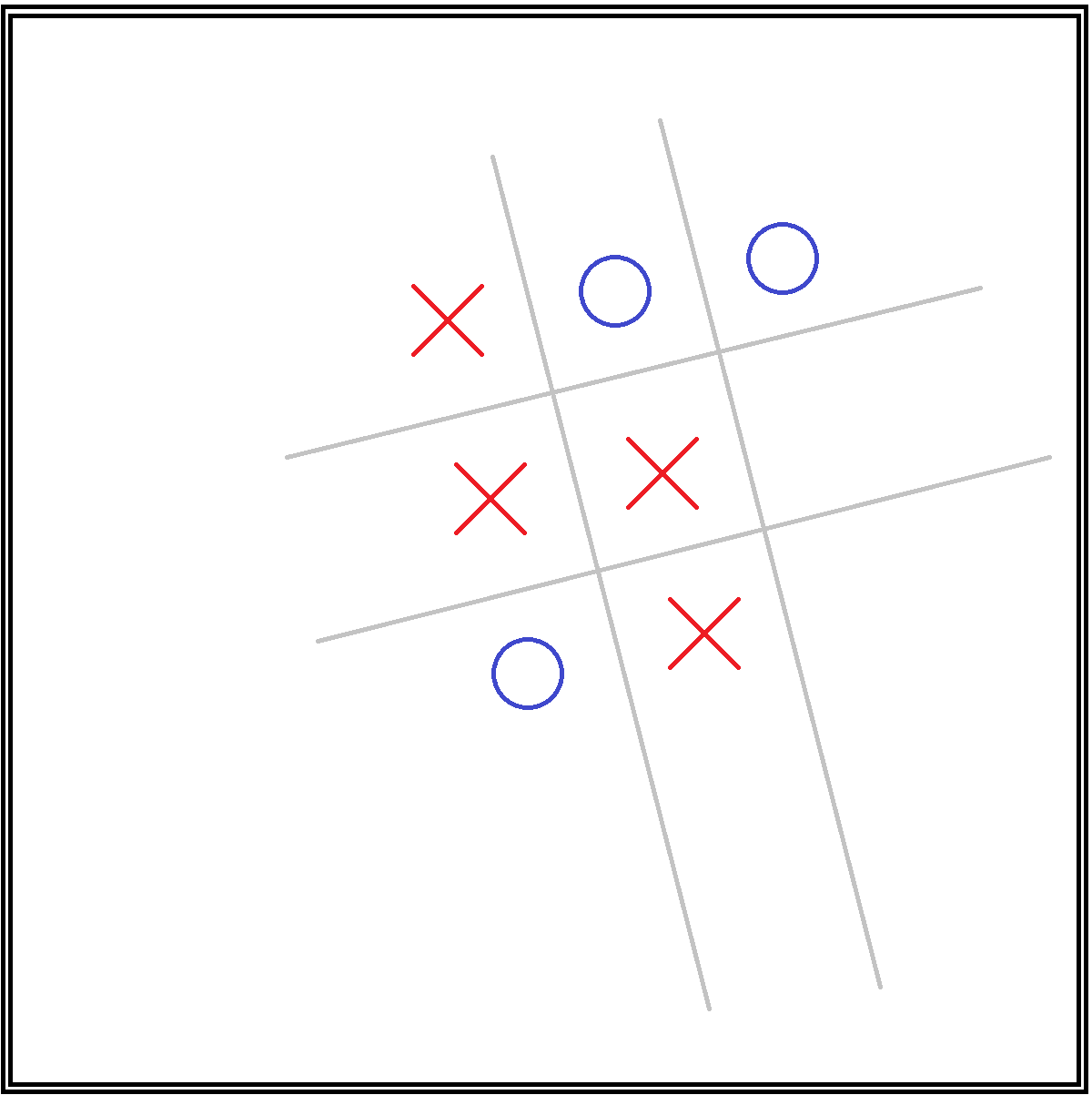On a warm and uneventful summer day, John and Mary passed the time by playing games of Tic-Tac-Toe, taking sticks and drawing in the soil. John and Mary are both child prodigies, so within two rounds they solved the game and got bored. To decrease their boredom, Mary proposed a new and exciting variant of Tic-Tac-Toe.
In normal games of Tic-Tac-Toe, a 3x3 grid is drawn pre-game, and is then filled with the Xs and Os. In Mary's variant, the grid is only hypothetical, and it's position is not yet known. It is up to the players to assert it's exact location in making their moves.
Mary is an extremely confusing child, and she often scares her parents with how strange she is, so naturally we must walk through a sample game to understand what is going on in her head.
The first move is made. Note that although a border is drawn, Mary's game takes place on an infinite plane without a border. The entire game takes place within this square for convenience.
The second move. An observant one would note that these first two moves do not actually change the course of the game.
Player One asserts a possible location of the 3x3 board based on the given moves, and follows up on his hypothesis with his third move.
Player Two retorts, proclaiming a different possible position of the board, and follows up with the fourth move. With this move, the board is now uniquely defined with the given information. Play can now continue normally.
A sequence of forced moves shows that Player Two's defiance completely backfires, facing a double threat, and she loses the game.
In Mary's Tic-Tac-Toe variation, what will be the outcome with optimal play? Does Player One have a forced win?






